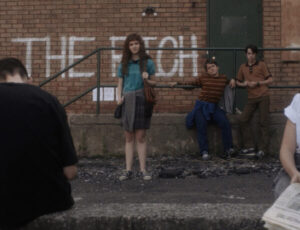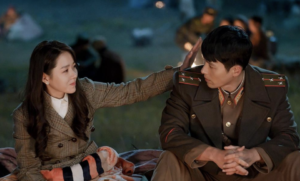Blue is the Warmest Colour (2013) has been mired in controversy since its release. It was honoured with the Palme d’Or at the 2013 Cannes Film Festival and gained high amounts of praise. It has also received criticism for its explicit sex scenes, as well as complaints over director Abdellatif Kechiche’s treatment of his cast and crew. Controversy aside, Blue is the Warmest Colour is well deserving of its praise. It is an incredibly raw film that left an indelible mark on my consciousness days afterwards. An honest look into a young woman’s self discovery, Kechiche’s cameras do not shy away from the most powerful gestures of love, nor the bitter draught of pain.
The film is about Adele (Adèle Exarchopoulos), a teen with dreams of becoming a teacher, who falls for Emma (Léa Seydoux), an older art student who she passes on the street. The film jumps chronologically, years at a time. It begins with Adele in high school, moves through her relationship with Emma, and into her career as a teacher. It’s clear from the beginning of the film that Adele doesn’t quite fit in. Right off the bat, her awkwardness shows: she is constantly adjusting her clothing, fixing her hair, unsure in her own skin. She must combat the judgment of her peers, and deal with false starts in other romantic ventures, before pursuing and falling headlong into Emma’s arms. Emma’s artistic sensibilities are alluring, though not something Adele entirely understands. As time stretches on, we witness Adele’s inner conflicts, and in turn, her personal growth.
Once established, Emma and Adele’s relationship quickly shifts into a fevered lust. The lengthy sex scenes are infamous for their explicit nature. The camera refuses to pull away, bringing us right into the thick of it: the tangle of limbs, and moans of passion, edging on the boundary of ecstasy and pain. These scenes push the boundaries of sex on screen, skirting the edges of erotica. It’s a little too intense, and overly long. As the first scene in particular stretched on, I ended up feeling like some creepy voyeur, rather than someone witnessing a joyful experience between two characters.
Awkward sex aside, the film is a beauty to behold. The camera often pulls in close to both girls’ faces, bringing the audience into their place of comfort as they gaze into each other’s eyes, the sunlight dancing around them. As its name would suggest, blue is a predominant colour throughout the film. It bleeds in around the edges unexpectedly. From the first instant Adele fixates on Emma’s blue hair, it’s all around. A constant reminder, pulling at Adele’s mind, made visible for the audience to see. It pops up all over; for instance, the first girl whom Adele kisses has blue fingernails and rings.
Exarchopoulos and Seydoux both turn in excellent performances. Exarchopoulos particularly is strong, and successfully conveys the many layers of Adele’s emotions with ease. Adele is a complex woman, and not entirely likeable. She is very often confused as she navigates the minefield of love. She is constantly searching for what she desires and what she needs, things that are, at times, at odds with each other.
Love is not the only subject explored here. The film hits upon a wide array of emotional states, and often has a melancholy feeling. At times, we seen Adèle besieged with loneliness, fighting the sting of rejection, or simply trying to be seen by those around her. A moving film with clear, and honest emotional content, Blue is the Warmest Colour is worth your attention. Blue is the Warmest Colour opens in Vancouver on November 8







